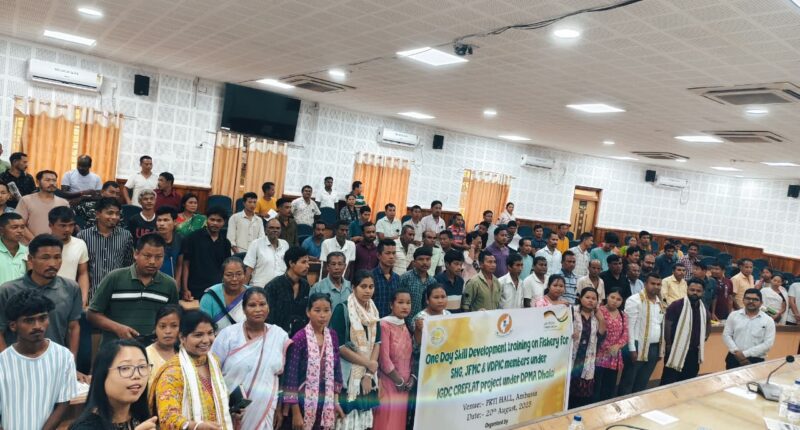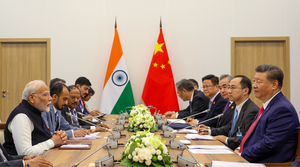Tripura Forest Department Promotes Sustainable Fishery for Livelihood Enhancement under IGDC CREFLAT Project
Agartala, Aug 23 — The Tripura Forest Department has successfully concluded a sub-division level capacity building programme aimed at enhancing livelihoods through the promotion of scientific fishery practices under the IGDC CREFLAT Project. Funded by the German development bank KfW and managed by GOPA as Project Management Consultants, the initiative seeks to build climate-resilient communities by integrating sustainable livelihoods with natural resource conservation.
The project covers 129 villages across 11 development blocks in Dhalai and North Tripura districts. Its core focus is on creating resilient landscapes to mitigate the adverse impacts of climate change through soil and water conservation measures. Out of a target of 645 check dams, 443 have been constructed to date, with 427 deemed suitable for fishery activities.
These water bodies now offer an opportunity for 17,876 project stakeholders to adopt composite fish culture as an alternative and sustainable source of income. Beyond direct beneficiaries, the intervention is expected to generate indirect economic benefits for individuals involved in fish seed production, supply, and allied activities.
A total of 870 participants attended the training sessions conducted from August 20 to 26, 2025, across Ambassa, Manu, WLW Gumti, Dharmanagar, and Kanchanpur sub-divisions. The sessions were led by senior officials from the Forest and Fisheries Departments, project staff, and consultants who provided technical knowledge on scientific fish farming, including fingerling selection based on market demand.
Participants were encouraged to procure fish seed from forest-based growers, government hatcheries, or private suppliers. The project will also support SHGs, JFMCs, and VDPIC members with essential inputs like fish seed and feed for table fish production.
This initiative not only promotes sustainable income generation but also contributes to food security, biodiversity enhancement, and community development—marking a progressive step toward climate-resilient rural livelihoods.










